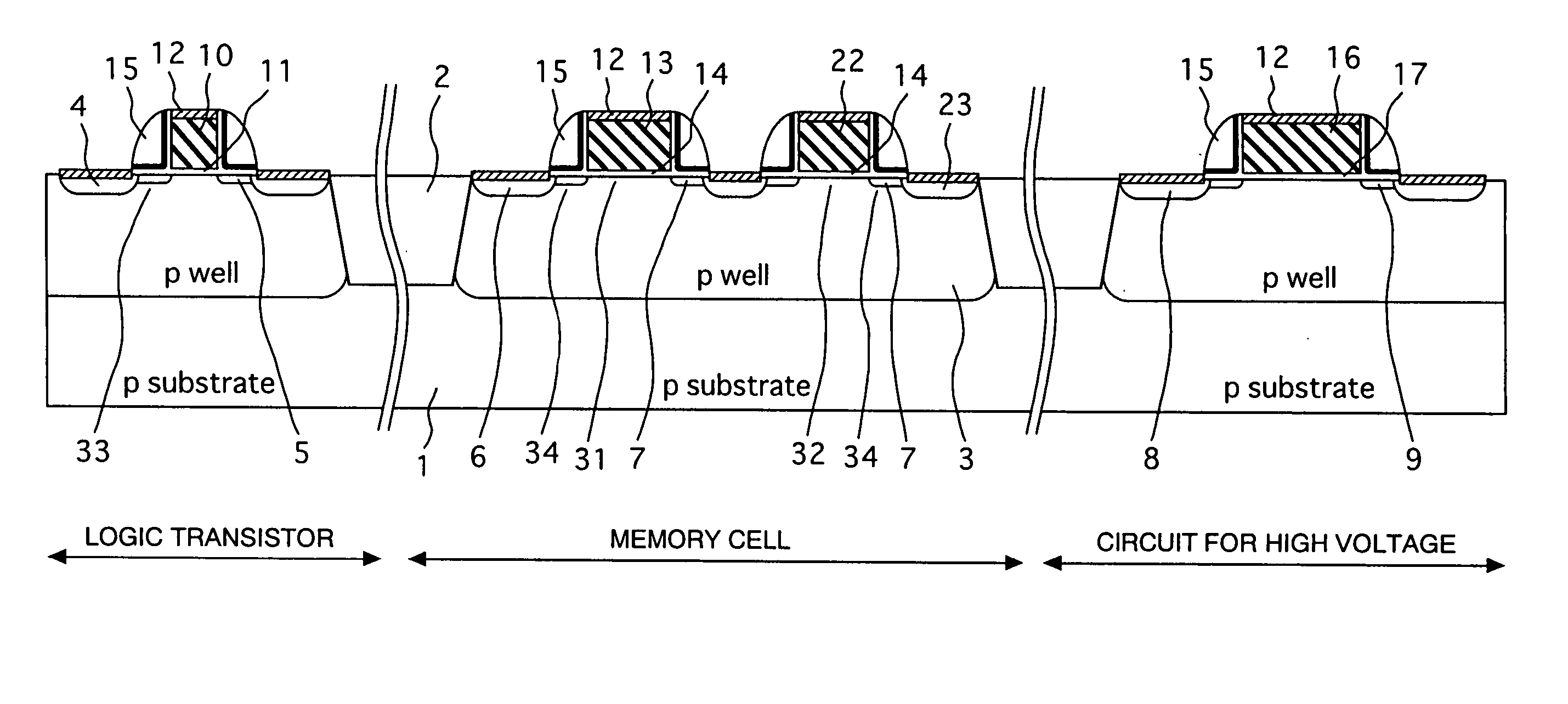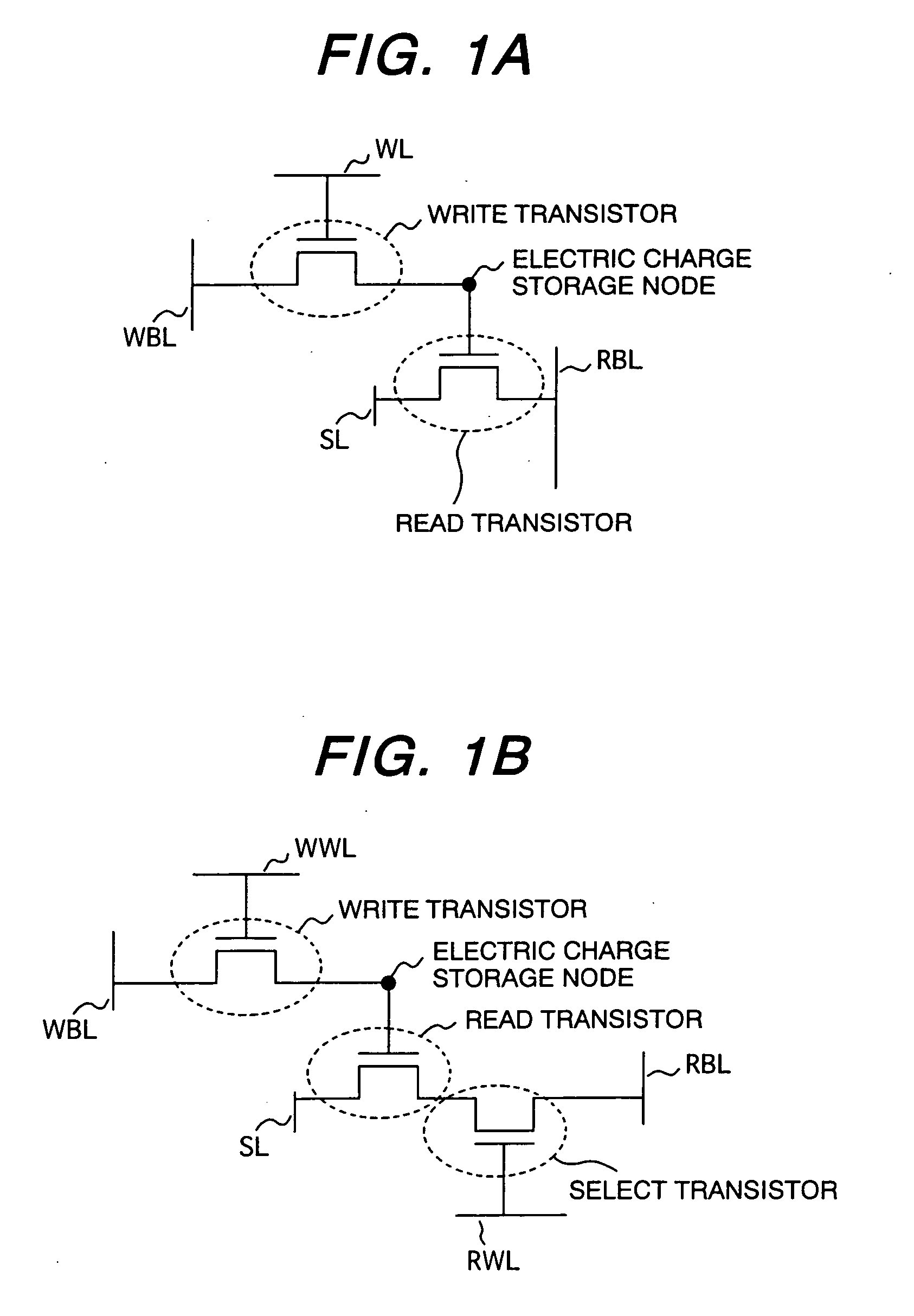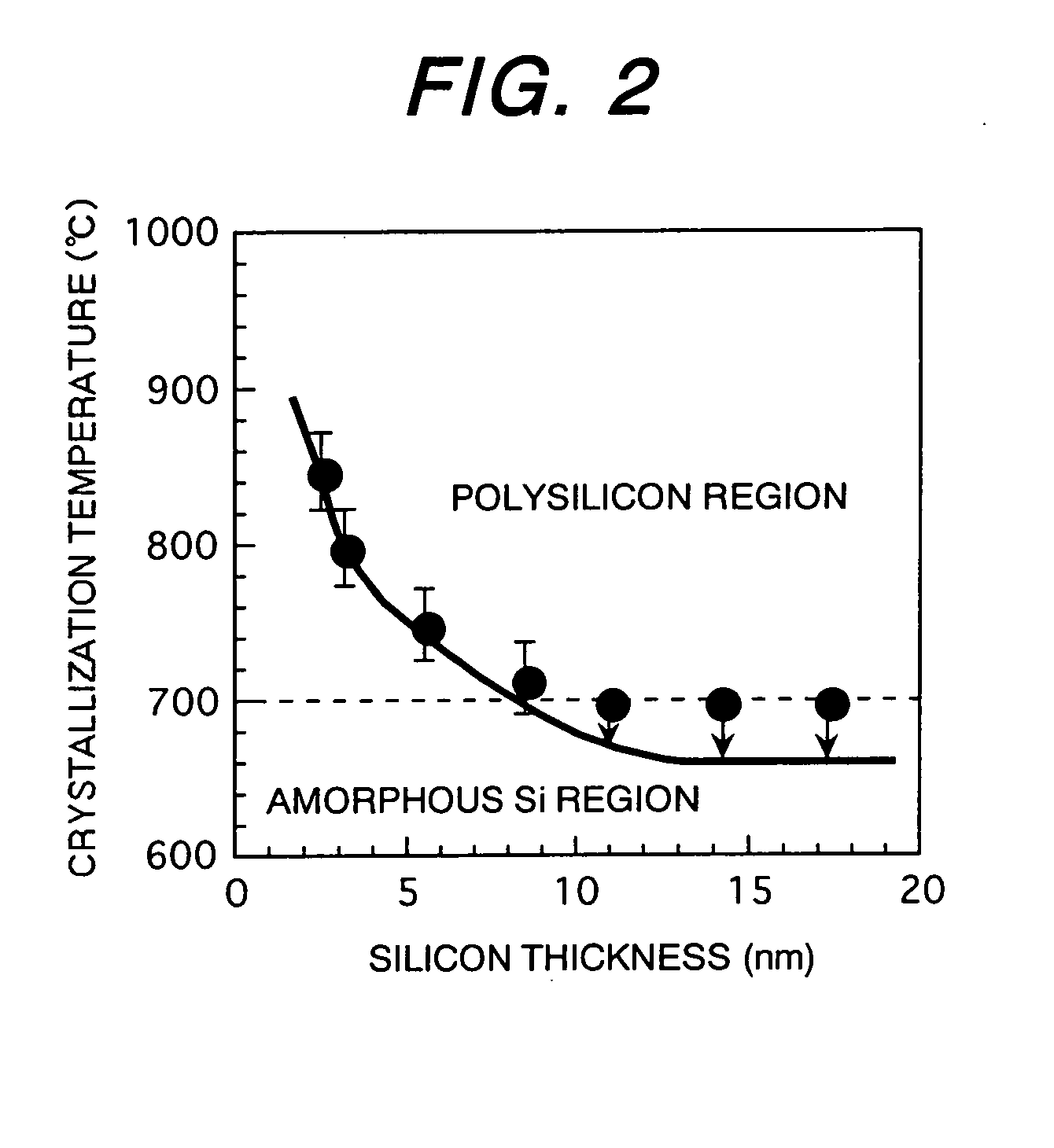Semiconductor memory device
a memory device and semiconductor technology, applied in semiconductor devices, digital storage, instruments, etc., can solve the problems of large gate length of transistors, inability to use read transistors as logic transistors, and loss of stored charge by tunneling current of gate-insulating films
- Summary
- Abstract
- Description
- Claims
- Application Information
AI Technical Summary
Benefits of technology
Problems solved by technology
Method used
Image
Examples
first embodiment
[0033] First, a structural description of memory cells of the present invention is given below.
(Structural Description)
[0034]FIG. 3 is a sectional view showing in array form a logic transistor, a memory cell block, and a high-voltage transistor of a semiconductor chip according to a first embodiment. The memory cell block takes a three-transistor gain cell arrangement equivalent to that of FIG. 1B. FIG. 5 is a diagram showing a planar structure of the memory cell block. The memory cell block shown in section in FIG. 3 is equivalent to the section taken along line B-B of FIG. 5. A structure of the section taken along line A-A of FIG. 5 is shown in FIG. 4. FIGS. 6A and 6B are sectional views that explain manufacturing processes, and FIG. 7 is an equivalent circuit diagram explaining an array construction of the memory cell block. The portion boxed with a discontinuous line in FIG. 7 is equivalent to a unit memory cell. For the sake of convenience in description, the sectional views...
second embodiment
[0049]FIGS. 8 and 9 show a second embodiment of the present invention. FIG. 8 is a sectional view showing in arranged form a logic transistor, a memory cell block, and high-voltage transistor of a semiconductor chip according to the present embodiment. FIG. 9 is a top view of the memory cell block, section C-C of which is associated with a memory block of FIG. 8. In terms of equivalent circuit composition and operation, the present embodiment is the same as the first embodiment. Only differences between both embodiments are described below. The first difference exists in that a stereographic structure is employed for a write transistor. The present embodiment is characterized in that because of the stereographic structure being employed, the write transistor is formed directly above a read transistor and this arrangement results in a very small memory cell area. This write transistor of the stereographic structure has a channel film 21 made of the 3-nm-thick non-doped ultrathin amor...
third embodiment
[0052]FIG. 10 shows a third embodiment of the present invention. The present embodiment differs from the second embodiment only in the kinds of transistor-silicidizing material and write transistor-constituting materials. The differences from the second embodiment are described below. First, the present (third) embodiment uses nickel (Ni) as a silicidizing material. Except in special places, therefore, nickel silicide is present on a gate surface 12 and a diffusion layer surface. Nickel silicide has the features in which it is low in resistance compared with a cobalt silicide and enables uniform silicide patterns to be prepared even for fine gate electrode patterns. At the same time, however, it is also known that nickel silicide, because of its low thermal resistance, increases in resistance when qualitatively modified by annealing at about 600° C. Accordingly, if a transistor is processed using nickel silicide and then the write transistor structure as described in the second embo...
PUM
 Login to View More
Login to View More Abstract
Description
Claims
Application Information
 Login to View More
Login to View More - R&D
- Intellectual Property
- Life Sciences
- Materials
- Tech Scout
- Unparalleled Data Quality
- Higher Quality Content
- 60% Fewer Hallucinations
Browse by: Latest US Patents, China's latest patents, Technical Efficacy Thesaurus, Application Domain, Technology Topic, Popular Technical Reports.
© 2025 PatSnap. All rights reserved.Legal|Privacy policy|Modern Slavery Act Transparency Statement|Sitemap|About US| Contact US: help@patsnap.com



